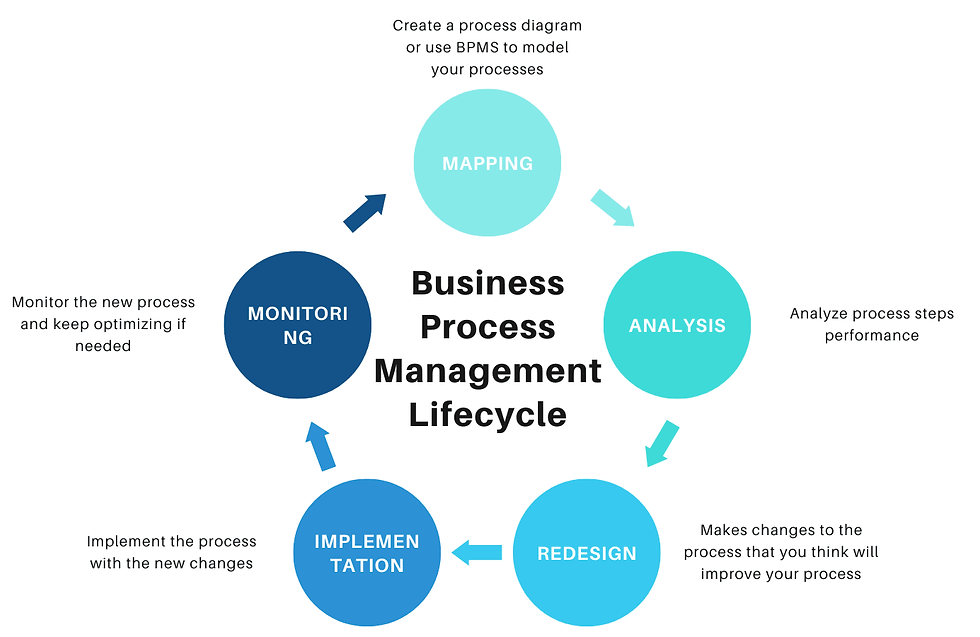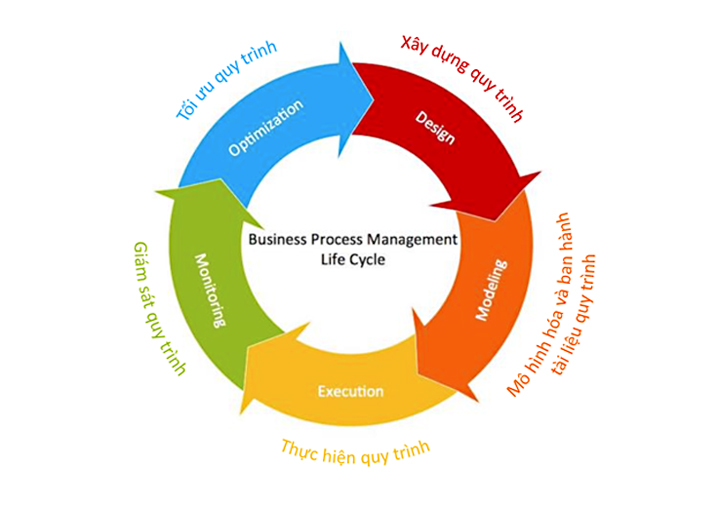Business Process Improvement: Techniques for Sustained Success
- sandyarsenaulttech
- Dec 26, 2024
- 4 min read
In today’s fast-paced business environment, companies are constantly striving to optimize their operations for efficiency, productivity, and long-term growth. Business Process Improvement (BPI) is an essential strategy for organizations looking to enhance their workflows, reduce costs, and maintain competitive advantage. By implementing BPI techniques, companies can streamline processes, improve customer satisfaction, and achieve sustainable success. This blog explores some effective business process improvement techniques that can lead to lasting results.

What is Business Process Improvement?
Business Process Improvement (BPI) is a systematic approach to identifying, analyzing, and improving existing business processes within an organization. The goal is to make processes more efficient, eliminate inefficiencies, and ensure that they deliver maximum value to customers. BPI is an ongoing effort that requires continuous evaluation and refinement of workflows to ensure optimal performance.
1. Map Out Existing Processes
The first step in any business process improvement initiative is to map out the current processes. This allows organizations to gain a clear understanding of their existing workflows and identify potential areas for improvement. Process mapping can be done through flowcharts, diagrams, or other visual tools that represent the steps involved in a process.
By documenting and analyzing the process, businesses can pinpoint inefficiencies, bottlenecks, or redundancies that may be hindering productivity. It is crucial to involve employees who are directly involved in the processes to get a comprehensive view of the operations.
2. Identify Key Performance Indicators (KPIs)
To measure the success of your business process improvement efforts, it is essential to establish Key Performance Indicators (KPIs). KPIs are measurable values that help organizations assess the effectiveness of their processes. By tracking KPIs, businesses can monitor performance, identify areas for improvement, and set benchmarks for success.
Common KPIs for BPI include cycle time, cost per transaction, customer satisfaction, and employee productivity. Regularly evaluating these metrics will help businesses understand whether their process improvements are yielding the desired results and if further adjustments are needed.
3. Implement Automation
Automation is one of the most powerful tools for business process improvement. By leveraging automation technologies, businesses can eliminate repetitive tasks, reduce human error, and increase the speed and efficiency of their processes. Automating manual tasks such as data entry, invoicing, or customer support can significantly free up resources and reduce operational costs.
Moreover, automation tools can provide real-time analytics, allowing businesses to track the performance of their processes and make data-driven decisions. In the long run, automation can lead to increased scalability and improved overall performance.
4. Adopt Lean Principles
Lean principles focus on eliminating waste and maximizing value for customers. In the context of BPI, lean methodologies can be used to streamline processes by removing unnecessary steps, reducing delays, and optimizing resource allocation. The goal is to deliver value with the least amount of waste, time, and effort.
One of the key components of lean is the concept of continuous improvement, or Kaizen, which encourages small, incremental improvements over time. By adopting lean principles, businesses can create more efficient workflows, improve quality, and achieve higher customer satisfaction.
5. Engage Employees and Foster Collaboration
Employee engagement is critical for successful business process improvement. Employees who are directly involved in the process have valuable insights into potential inefficiencies and can contribute to developing practical solutions. Encouraging collaboration and open communication between departments and teams can help uncover issues and generate ideas for improvement.
Additionally, fostering a culture of continuous improvement within the organization is essential. When employees understand the importance of BPI and are empowered to suggest changes, they become active participants in the success of the initiative.
6. Utilize Technology and Software Solutions
The integration of modern technology and software solutions is crucial in optimizing business processes. Enterprise Resource Planning (ERP) systems, Customer Relationship Management (CRM) software, and other specialized tools can help automate tasks, improve data sharing, and streamline communication across departments.
By selecting the right technology for your business, you can improve coordination, reduce manual errors, and accelerate decision-making processes. Furthermore, these tools can help organizations scale their processes without compromising quality or efficiency.
7. Continuous Monitoring and Adaptation
Business process improvement is not a one-time event but an ongoing journey. It is important to continuously monitor the performance of your processes, gather feedback, and make necessary adjustments. The business environment is constantly evolving, and your processes need to adapt to changing market demands, customer expectations, and technological advancements.
Regularly reviewing your KPIs and conducting periodic assessments of your processes ensures that your business remains agile and responsive to new challenges.
Conclusion
Business process improvement is essential for businesses aiming for sustained success and long-term growth. By implementing techniques such as process mapping, automation, lean principles, employee engagement, and leveraging technology, companies can optimize their operations, enhance customer satisfaction, and boost profitability.
However, BPI should not be seen as a one-off project but as an ongoing effort to continuously refine processes. By committing to business process improvement, organizations can stay ahead of the competition and drive lasting success in a constantly evolving marketplace.
SITES WE SUPPORT
SOCIAL LINKS



댓글